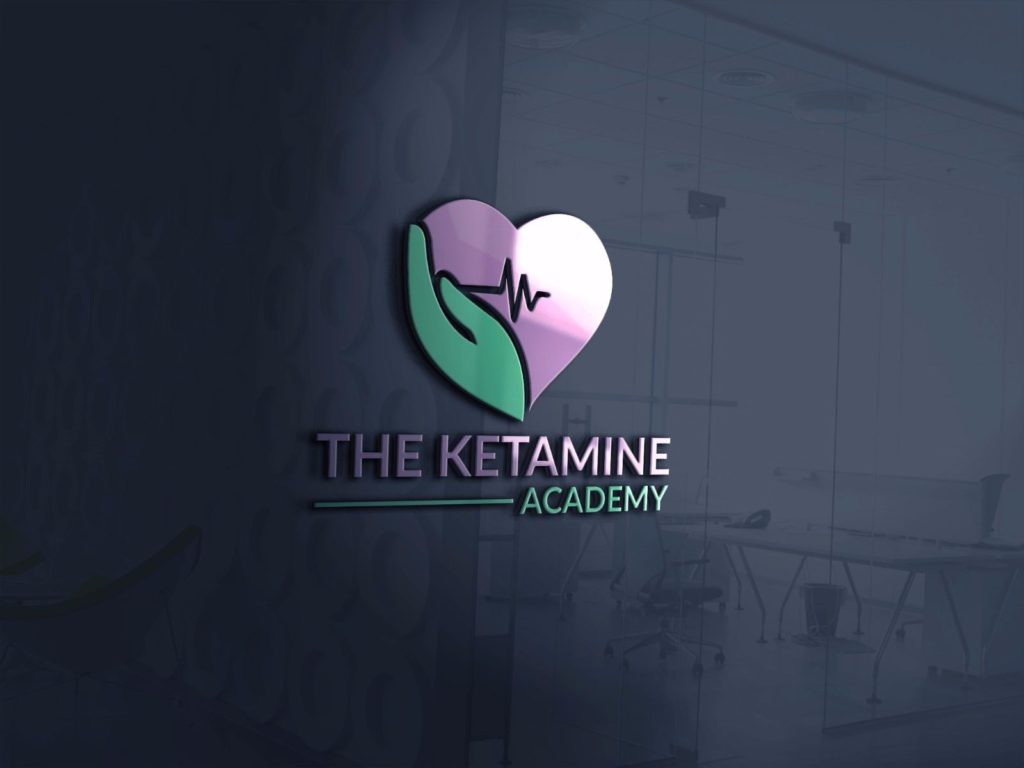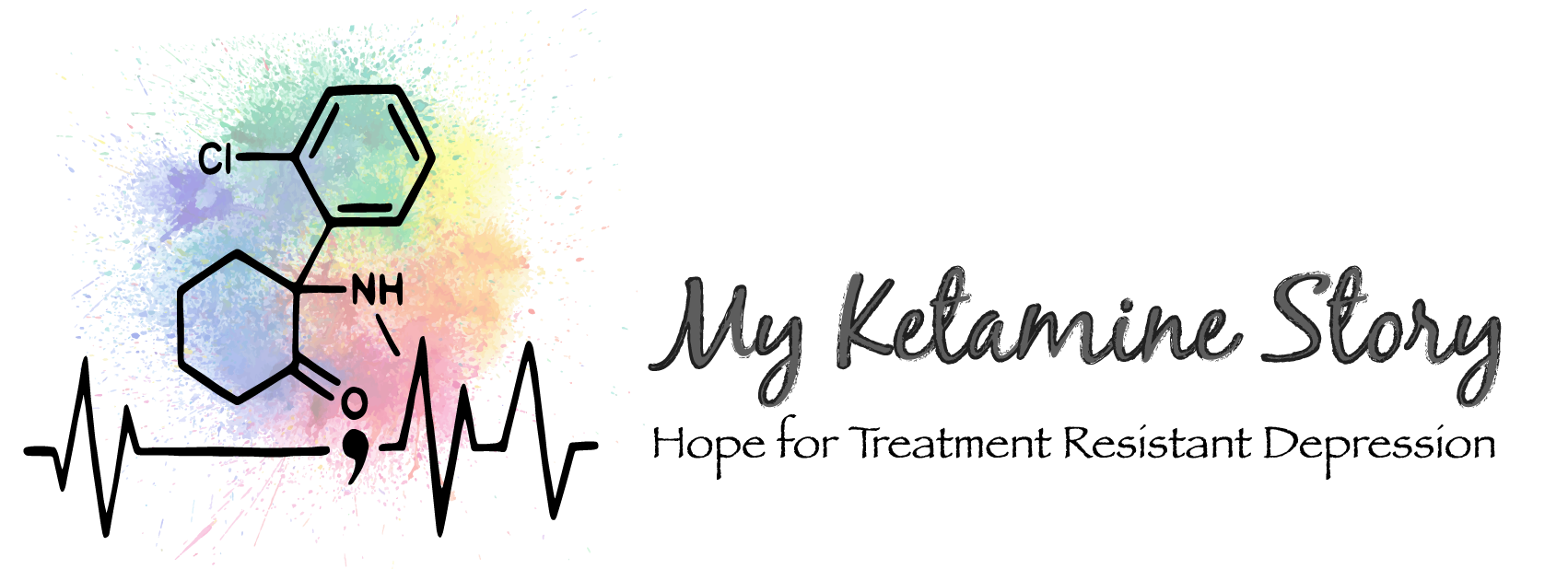A Ketamine Patient’s Views On The News Of The FDA Approved Esketamine Nasal Spray
Hello and welcome. It is Susan from myketaminestory.com.
I am a blogger that suffers with Treatment Resistant Depression (TRD), Anxiety and Obsessive Compulsive Disorder (OCD). I was introduced to Ketamine for TRD in January 2015. I am forever grateful that I was. I spent the first two years focused on my recovery. I now have an excellent treatment plan in place but that does not clear me from obstacles or pitfalls. I journal regularly. I educate and advocate for Ketamine Therapy to help treat depression.
I write for The Ketamine Academy, as well as, my personal blog, MyKetamineStory. com to help those considering Ketamine therapy for treatment resistant depression or those interested in becoming a Ketamine provider to those of us suffering with profound depression.
As I approach this next article on Ketamine, I feel overwhelmed. Yesterday I was fired up and spent much of my day formulating this blog in my mind. I sit here typing feeling a massive sadness. I have so many emotions regarding the FDA approval of the new nasal spray that they are overwhelming to me.
I want to rant.
I want to speak frankly and honestly.
I want to educate.
I want to have my voice heard on this topic.
I want to write freely and openly on my views of Esketamine nasal spray for treatment resistant depression. I would love to do so in an intellectually, non-emotional way, and I fear that may not be possible for me to achieve without, in fact, getting very emotional and real.
I have never avoided tough discussions regarding my history with depression in the past, and I will push through these difficult feelings I am encountering while I type because I feel I have some very strong points to make on the topic.
I am a Ketamine patient. I have been receiving Ketamine for over four years now. I have shared my experiences over the years and have been able to help numerous people through my website and the other platforms I have written for understand Ketamine and how it has immensely changed my life and how I live it. I have had scores of people reach out to me via emails, calls, and texts with questions, concerns, to share their experiences, and mostly I feel for decision making and support. I am not stating this as a way to boast about myself, but more so as a foundation to establish my involvement in advocating and educating others on the use of Ketamine therapy to treat debilitating depression.
I have even tried to educate professionals that are interested in providing Ketamine to their patients. I have joined forces with The Ketamine Academy, an online Ketamine provider training course, in order to spread the word about Ketamine and hopefully get more practitioners to open new Ketamine clinics with the ultimate goal of aiding people plagued with a disease I am intimately familiar with. I also want there to be a plethora of options for seeking Ketamine therapy available to patients with treatment resistant depression. I truly enjoy adding Ketamine clinics to my Ketamine provider list in the hopes of reaching more individuals, like me, that have been struggling for years with multiple of failed treatments find a Ketamine facility in their area or at least close enough to realistically return to for maintenance doses every couple weeks or once a month.
I say all of that as a precursor to this subject on the FDA approved version of Ketamine that fuels me with rage and sadness.
Last week a friend informed me that she saw a television show on how the FDA was about to approve a “Ketamine”-like nasal spray to the market and wanted to know if I caught the program. I was not at all surprised that there were talks about this “new” drug for combatting resistant depression as I have known that researchers were working on a formula that might imitate the success that Ketamine has had on those of us suffering with major depression and have failed repeatedly to find a medicine that could relieve us of our symptoms. I took a few deep breaths, maybe more than just a few, and informed my friend that I had not seen the program and had no desire to as I have major doubts about a copycat of Ketamine working as well as the real product that I have been treated with over the last four years and counting. I especially didn’t feel that a nasal spray was the best form of delivery. I chose to walk away without further discussion due to the fact that I can get pretty fired up speaking to people about the FDA and their approval process and how there is already a working drug called Ketamine that should be given credit for the superior drug that it is and which should be covered by insurance companies.
A few days go by and I receive a text from a lady that I have spoken to many times on the phone about her son and Ketamine. She likes to give me updates on how her son is doing after trying Ketamine infusions and loves to credit me for my support and discussions with her son about my experiences with Ketamine and what to expect from the infusions and his recovery. I remind her often that all I did was share my experiences with her and her son. Ketamine works. The credit is to be given to her son for doing what was needed to heal and, of course, Ketamine for being the drug that it is. In her text she sends me a direct link to an article written about the FDA approving Esketamine nasal spray. I don’t want to read it. However, I do. It is late at night and I am in bed, ready to retire. I figure that this article is going to spark feelings I don’t want prior to falling asleep, but that didn’t stop me from reading it. I was fired up. I was conflicted. I wanted to share my feelings with my husband but opted to let it simmer and try to sleep. My sleep was broken, and my mind was racing. It was not the time to spark high intensity emotions, and to be honest, I just wanted to ignore the news and my feelings surrounding the report.
The following morning, yesterday in fact, I woke to yet another friend sending me another article with the simple question: Progress??
I sighed and once again the announcement was in my face.
I put my phone down; faced down, as if that effort to disconnect would turn my mind off from the questions and, more so, the raw emotions I was experiencing.
I didn’t want to start my day this way.
My closest friends and family are totally aware of my success with Ketamine and how it has impacted my life and ability to heal and recover from decades of turmoil from this deadly and misunderstood disease of treatment resistant depression. I do not hide the fact that I get Ketamine injections every two weeks to rid me of my depressive symptoms. They are aware that I also write on the subject in order to help others suffering with this chronic problem.
They are all excited by the news.
I turned my phone over to reply and discover another friend has sent me the link to yet another article on the story.
I don’t know what I want to say, but I do know that my feelings are intense and I need to be careful about my reactions because I know they think this is wonderful news for me.
And it is not.
As I am formulating my response my husband says to me, hey did you see the latest on the FDA approving Esketamine nasal spray?
I want to scream.
I start my arguments as though I am in court…..
The FDA won’t approve the use of Ketamine which is the real deal, and an inexpensive generic drug as well.
Insurance companies won’t cover the out of pocket costs I have to get a treatment that has changed my life.
Nasal spray is not an ideal delivery method. Seriously.
Two hours and twice a week is not practical or realistic. I go every other week for a Ketamine injection and can leave after an hour. It is ridiculous to have to wait around for two hours for a nasal spray. I saw no mention anywhere about injections, only a comparison of infusions with intranasal delivery.
The cost of office visits and after care and the copycat version of Ketamine will far exceed the costs I have, and yet insurances will be required to pay out for Spravato treatments. What an injustice!
Why would I ever choose to stop my Intramuscular Ketamine treatments for all the hoops I would have to jump through to receive a “cousin” of Ketamine.
I know Ketamine works for me. It works for others too.
It is insane that the FDA won’t even consider relabeling Ketamine for the purpose of treating resistant depression!
And…. you may have to also be on another antidepressant in conjunction with the Esketamine nasal spray?
I am only on Ketamine. That is it. Nothing else is necessary. I was once on close to a dozen different medications, at one time, in the past and I now require only one, Ketamine.
As stated in one article, Spravato will cost between $590 and $885 per treatment. At two sessions a week, the cost is upwards of $4,720 in the first month. Maintenance therapy afterwards would be $2,360 to $3,540 per month, according to the Post.
This is not including the office visits and after care.
That is more than what some patients are paying for Ketamine infusions. I know my out of pocket cost are far lower than these statistics. I could actually save the insurance companies money and get the treatment that is continuing to make it possible for me to lead a productive and reasonably happy life!
I want to cry and stomp my feet.
I inform my husband that I have received numerous links to different publications and which one is he referring to, and would he like to forward me a link as well. He sends me the article he just finished reading and my tirade begins.
I used profanity. I couldn’t contain myself.
I rant.
I am outraged.
Every aspect of the news has me fuming.
I, of course, then had to google to see what my first doctor, Dr. Steven Levine, who is the founder of Actify Neurotherapies, and the doctor I initially went to see in New Jersey back in 2015 for my first six Ketamine infusions, had to say on the topic as I value his opinion. In my opinion, he does explain the pros and cons in a politically correct way, I suppose. If you are interested in reading his perspective in a question and answer commentary here is the link, IV ketamine, intranasal esketamine likely to ‘happily coexist’.
I want to disagree, but he has made several valid points. I say reluctantly.
The only other aspect of the many articles I have read over the last 24 hours that I can agree with is the following excerpt by Dr. Demitri Papolos.
Many doctors who have become comfortable offering ketamine for depression probably won’t switch to esketamine, said Dr. Demitri Papolos, director of research for the Juvenile Bipolar Research Foundation and a clinical associate professor at Albert Einstein College of Medicine.
“I’m very pleased that finally the FDA has approved a form of ketamine for treatment-resistant mood disorders,” Papolos said. He said the approval legitimizes the approach he and other doctors have been taking.
I can see his point. The simple fact that a big pharmaceutical company wants to create a similar drug to that of Ketamine does, in my opinion, legitimize and validate what I have been experiencing for years: Ketamine works!
But he hopes that doctors who are currently using ketamine continue to do so. “It’ll be a lot less expensive and a lot easier for their patients [than esketamine],” he said.
Absolutely!!! I know my doctor has no desire to stop using Ketamine. I would be extremely upset if he did.
And animal studies show it’s possible that old-fashioned ketamine is a more potent antidepressant than esketamine, Papolos said.
I totally agree. I know after speaking to my doctor we have no intention of switching Ketamine to Spravato nasal spray for many of the reasons I have slightly commented on and will expound on in this article.
I am feeling the desire and extreme need to voice my opinions on this topic after my husband and I bantered back and forth about our feelings regarding the news of the FDA approval of Esketamine nasal spray.
I was determined, by the end of my diatribe, to spend my day off writing my opinion and reactions to the various reports on the announcement of Spravato nasal spray.
I would like to start off on an explanation of what having treatment resistant depression has been like for me and many others I have had the fortune to interact with over the decades. It is a disability that people can’t see and often believe you have control over.
If you just….. Insert any form of therapy, exercise, positive attitude, get out of the house, get a job, socialize, here.
You would feel better if you only….
It doesn’t work that way. Depression kills your motivation and desire to live. You are forced to try several medications, maybe even ECT, and may end up in a psychiatric hospital multiple times after failed attempts at taking your life, you are administered cocktails of medications in hopes of alleviating the noose depression wraps around your mind and body. You lose all hope of keeping a steady job, it affects relationships, and condemns you to a life sentence behind bars that are invisible to everyone but you. It robs your sanity and constantly steals all the aspects of life worth living for. It is as though you are violently captured and buried alive. There is no shovel or pick to help dig your way out. You wait weeks and months for medications or treatments to rescue you, only they don’t – and you fall deeper into hell and darkness. That is only briefly touching on what treatment resistant depression has been for me.
In conjunction with the emotional side of treatment resistant depression is an enormous sense of doom coupled with severe reactions and then withdrawals from the multitude of antidepressants you have been placed on. That is not even including the slew of partnerships with even more drugs to handle the side effects of said antidepressant medications you have been placed on. All to potentially ward off the depression, while waiting for relief from the most sinister being convincing you that life is not worth the battle.
I was at my doctor’s office last night to get my biweekly booster of Ketamine when I was once again explaining to him my intense upset that the FDA won’t stand behind Ketamine, but was willing to grant approval for a newer version of a drug that has been around since the sixties. I told him I knew when I first started writing on Ketamine and its benefits that this would be the route the FDA would take and that it was significantly in part to make money for the pharmaceutical companies. There is no money in relabeling an old and inexpensive drug like Ketamine. It doesn’t matter that Ketamine works. The reason that Esketamine is even in production is because of the success of the real deal, Ketamine, having such victory over depression for those that have had countless failed attempts with traditional antidepressant drugs on the market.
The FDA can claim that Ketamine is risky. They can profess their concerns about the dissociative effects that Ketamine produces during treatments until they are blue in the face and I will always adamantly believe that it is actually one of the major reasons Ketamine has been so successful for me.
I have written on this topic a couple of times over the years. The article that comes to mind immediately and is relevant to this discussion is, Ketamine Therapy And Why The Disassociative Effect May Be A Positive And Not A Side Effect To Eliminate, where I discuss the advantages to the separation from mind and body.
I described this phenomenon – and positive effect – of Ketamine with my doctor again last night. I explained that, for me, when I was introduced to Ketamine infusions back in 2015, I was profoundly depressed and suicidal. I said imagine a person that has been stuck in a hellacious black hole, desires only to end her existence, truly believes because of all the unsuccessful treatments behind her, and the horrendous side effects she has been plagued with from all the failed treatments, has lost all hope. This same woman has no doubt in her mind that she is being punished and believes she is creating her own nightmare. How could she not? No treatments she has tried have ever aided her in relief from her symptoms. She is convinced that death is the only way out of her terror and darkness. Now take that tragic woman and infuse her with Ketamine, her life has been encompassed with a state of mind equal to an empty black box with no escape. The disassociative effect of Ketamine during her first of several infusions plucks her from that box and allows her to see something better. It allows her to let go of self, old ideas, and the belief that the world is a hopeless place for her and always will be. She is pulled out of that box and shown a world of colors and textures. She experiences joy and laughter. She is shown light. She then, and only then, gains a genuine understanding that her mental illness is just that: an illness. A disease she can not control. She feels alive for the first time. She is given the gift of hope. She has been given an opportunity to know and experience her inner world differently. She is separated from the turmoil that consumes her. She has been given a short, brief, and altering view of something larger than herself. She is given comfort. She is aware that there may potentially be a life worth fighting for waiting for her around the corner. When the hour is over and the Ketamine infusion is completed she walks away feeling something has changed, but may not fully comprehend why. She does, however, feel differently and just doesn’t understand how that will change her life. She may sink back into the black box, but somewhere in her unconscious, things have been stirred that were once dead. She is trapped again in her isolation and fear. She is stuck. She returns to her next appointment and each time she disconnects from her body and floats above the deep sorrow that has kept her prisoner for decades. She gets a glimpse of hope. She is outside and feels free from her tragedy; if only briefly. She is shown she is not her mind nor her body, but more. This event happens again and again and she begins to disengage from the illness and sees the person she is truly meant to be. She is offered clarity. She is removed from that box and gains a nugget of understanding into her darkness, and is free from fault. She may sink again and again, but deep inside she is now aware that there is a way out of her pit of despair. She fights harder to survive the times of hopelessness. She battles in a war that she knows may have a different outcome because she has witness it and felt it. Now picture that same woman given a nasal spray where this effect is not displayed to her. She doesn’t experience something outside herself; that euphoric sensation that leads her to believe in healing. She may never let go of the false belief that she is responsible. She remains one with her illness.
I feel what others classify as a negative about Ketamine, and needs to be removed when formulating a new drug that works on the glutamate system like Ketamine does, is actually what convinced me that I wasn’t the cause of my depression and failed treatments, which were just that unsuccessful ventures to heal a diseased brain.
I would also like to address the delivery method of esketamine or Spravato, as it will be named. I have tried the nasal spray version of Ketamine and found it problematic for me. I was given a prescription that I filled at a compounding pharmacy in my area during the winter months when traveling through the mountains to my doctor’s office, which is an hour away, was not safe for me to do.
The feelings I have about the nasal delivery method are based on my experience when using the actual drug Ketamine, and not the “cousin”, which I have even more doubts about. Having said that I will add a side note here to address that even though it wasn’t for me, I feel that had the FDA approved a nasal spray of Ketamine, it may still be beneficial for those that have no other options due to the fact that Ketamine is not covered by insurance companies and can be costly. Which is such a travesty in my humble opinion because Ketamine has been a life saver for me.
I will stop here to address another issue I have with Spravato; which is that you will still be required to have it administered in a doctor’s office. You will be required to wait two hours after delivery of the drug before you will be allowed to leave. If you need to go to your doctor’s office twice a week as the articles I read on the subject of the FDA approved Esketamine nasal spray requires you to do, the treatments could consume a large amount of your time as well as the doctor’s time. It will also have an additional price tag or copay.
The cost of the visits and the drug will be numerous; all of which supposedly your insurance company will cover. If you are fortunate enough to have coverage. All for a nasal spray rendition of Ketamine. A drug possibly less potent than Ketamine for treating resistant depression.
I know I am biased here. I know that I am one of the few fortunate enough to have a doctor that works with me financially and that not everyone has the opportunity I have been given. All that aside, I still feel a strong need to advocate for Ketamine injections and infusions and persists in educating professionals about the Ketamine Academy online training program to help them become providers of Ketamine. Ketamine works. If Ketamine didn’t work, big pharma wouldn’t have employed researchers to produce a copycat of Ketamine.
At first, when I tried Ketamine nasal spray, I thought what a terrific and convenient way to administer Ketamine in the comfort of my own home. I found I was getting relief from my depressive symptoms. I was. However, I found it to be short-lived and inconsistent. I could, however, be administered intramuscular Ketamine twice a month with results worth writing about.
I also have a long history of sinusitis and allergy issues which cause inflammation in my nasal cavities, and I felt that hindered the ability of the Ketamine nasal spray to be delivered effectively. I was often very frustrated with the results or lack of results I was getting with the nasal spray. On top of the issues with my allergies closing off the passageways through my nose was the poor results I was getting from a drug that consistently improved my mood and relieved me of my symptoms of depression for weeks at a time, when injected.
I also worried about the frequency with which I had to use the Ketamine nasal spray. It was not a product or method of delivery I wanted to continue to use, and I opted to stop using Ketamine in this manner.
I would use it only in a case of an emergency, for example if I felt suicidal, but then noticed the expiration date was only for thirty days and I was flushing money away because I wasn’t using the prescription enough before the product expired.
I determined there were too many variables and felt it wasn’t the best way to receive my Ketamine. My doctor has been great about fitting me into his schedule and often times staying late in order for me to receive my treatment if the weather prevented me from keeping my appointment. If the roads were not safe, I learned to work harder to reassure myself that relief was on the way and use my coping skills to manage the depressive symptoms. These “snow days” would actually benefit me greatly in learning what I was capable of coping with even if I was at first a reluctant student. I have found that after four years of Ketamine use that I am getting better at tolerating the return of my symptoms. I have faith in the drug, know relief will be given, and can use mindfulness exercises and daily meditation to manage my life when the depression resurfaces.
An additional note: If one can only afford or obtain Ketamine in the form of a nasal spray, it is still better than being without Ketamine. Ketamine has helped me and if the nasal spray was the only option I had, I wouldn’t hesitate to continue using it. I am blessed to have other options for the delivery method of Ketamine and I am grateful for that fact; every day.
What I keep coming back to is the simple fact that if a drug works why try to duplicate it? Why not just approve that drug for the use of treating resistant depression. I know there is no money down that avenue and it seems, to me, to be largely about the money and not the mental health of the patients that benefit or could benefit from old fashioned Ketamine. If it was about the people suffering, I believe, more research could have gone into educating and advocating for Ketamine and how to provide clinics to specialize in administering Ketamine in a safe environment with well trained staff.
I must have acceptance that the FDA will not approve of Ketamine for treatment resistant depression. I don’t like it. I don’t have to agree with it. I can believe that there will be obstacles for those trying Spravato but I have no control over that. I am sad for those that could truly benefit from getting Ketamine infusions or Intramuscular Ketamine shots. They will never have the opportunity to try this treatment or methods and will have to rely on Esketamine instead.
I believe it is all about the money and not patient care.
This article and my ruminations have gone on far longer than I intended. I should just wrap this blog up before I find myself repeating myself in an effort to be heard. I have made the points I wanted to make and I should leave it at that.
If you would like to become a provider of Ketamine Therapy consider enrolling in The Ketamine Academy‘s online Ketamine Infusion Therapy training course; it would be an excellent decision and could be extremely helpful for others like me. The Ketamine Academy online program will surely benefit you and the mental health community.
I have been generating a Ketamine Providers and Locations list and I update it regularly. Please visit my personal website for the full provider list. This list may help you find a clinic in your city or state. I update the provider list regularly. I highly recommend individuals contact me if you administer Ketamine or if you are aware of a Ketamine provider not in my directory; I will happily add new Ketamine clinics.
In conclusion, If you know of anyone suffering with treatment resistant depression, like I do, let them know that Ketamine therapy may be an option worth looking into. It has been and continues to offer me relief from my depressive symptoms.
Originally Post On The Ketamine Academy





